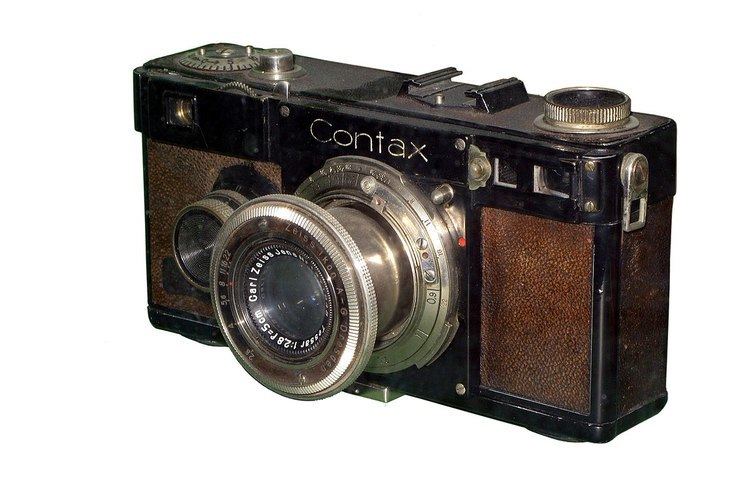Lens mount Contax bayonet Exposure manual | Focus manual | |
 | ||
Flash standard accessory shoe | ||
The Contax I, or Original Contax, is a 35 mm rangefinder camera made between 1932 and 1936 by Zeiss Ikon. The Contax I had six identifiable variants, but fundamentally identical; every aspect was designed to outperform the Leica. For instance, the removable back was for faster loading and reloading, the bayonet lens mount was designed for rapid lens interchangeability, the long-base rangefinder was for more accurate focusing with large aperture lenses, and the vertical metal shutter not only gave a faster maximum speed but also banished the problem of shutter blinds burning.
History
In 1932, Zeiss Ikon of Dresden decided to produce a competitor to the Leica II, designed to be superior in every way. The name Contax was chosen after a poll among its employees. Dr. Ing. Heinz Kuppenbender was its chief designer.
Made between 1932 and 1936, the original Contax (later known as Contax I after later models were introduced) was markedly different from the corresponding Leica II. Using a die-cast alloy body it housed a vertically travelling metal focal-plane shutter reminiscent of the one used in Contessa-Nettel cameras, made out of interlocking black-finished brass slats. somewhat like a roll-up garage door
The interlocking slats were aligned by specially made silk ribbons, which were very strong but subject to wear. The coupled rangefinder had a very long baseline, with its own eyepiece next to that of the viewfinder.
Other main differences included focusing drive built into the camera body for use with standard lens, removable back, shutter speed knob integral with film wind knob placed at the front of the camera body, and finished in black.
The young lens designer Ludwig Bertele, formerly of Ernemann, was charged with the responsibility of designing the lenses.
